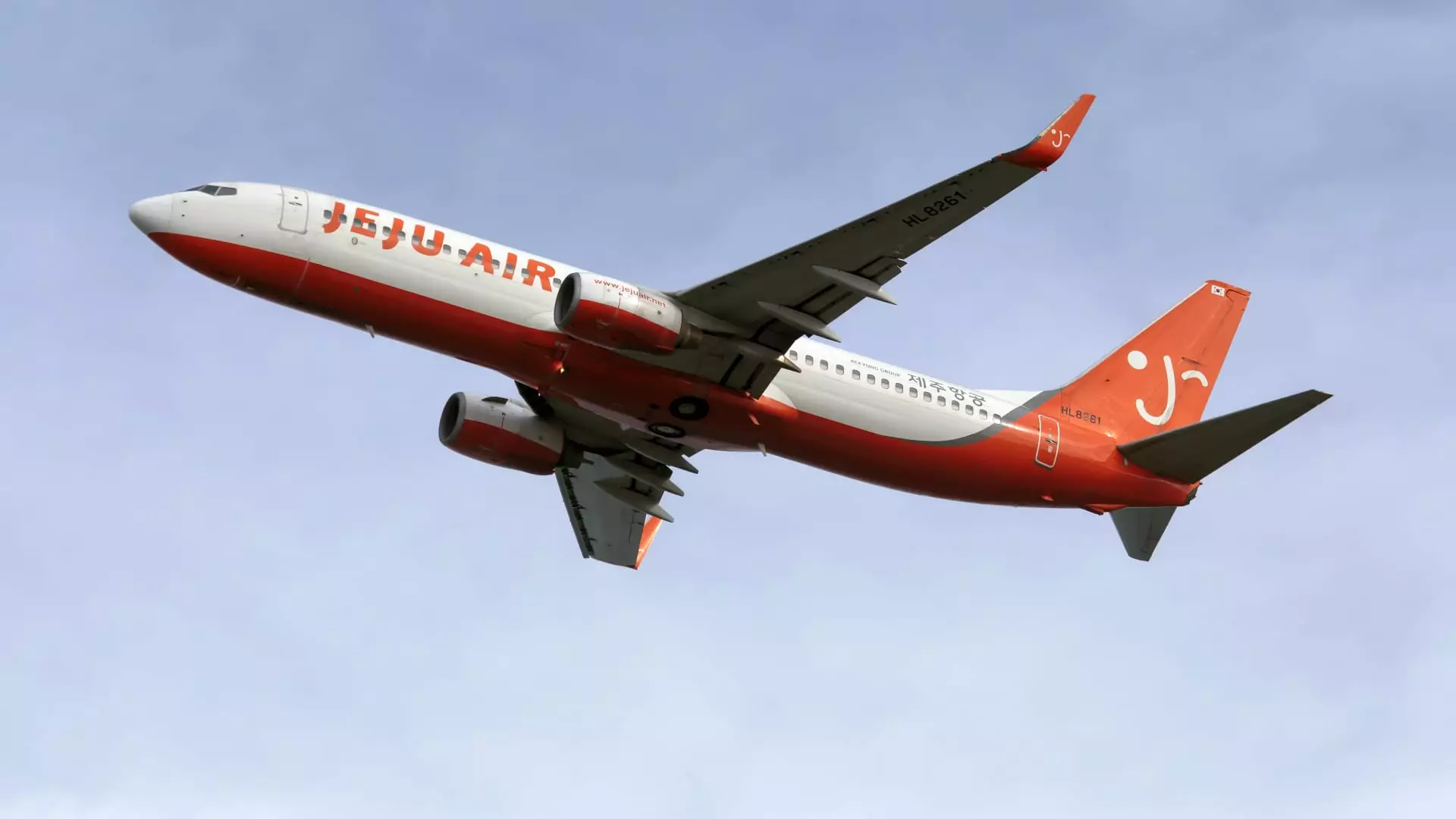In a shocking turn of events, a Jeju Air flight met a grim fate as it attempted a landing without its landing gear extended at Muan International Airport in South Korea. The tragedy, which resulted in the deaths of 179 people among the 181 passengers on board, stands as South Korea’s deadliest aviation catastrophe in recent history. This incident has prompted extensive investigations to discern the underlying causes, invoking not just a national sense of grief but also a critical eye towards aviation safety standards globally.
In response to the calamity, Choi Sang-mok, South Korea’s acting president, swiftly ordered emergency inspections of the country’s fleet of Boeing 737-800s. This particular model, known for its robustness and frequent use across commercial airlines, has largely maintained a pristine safety record. Yet, the tragedy has sent ripples of concern throughout the aviation community, compelling operators to reexamine their standards and protocols.
The Boeing 737-800, a staple in the commercial aviation industry, contrasts starkly with its younger counterpart, the 737 Max. The latter’s troubled history, embroiled in two catastrophic crashes that killed 346 souls, has raised questions about reliability in a model of aircraft that had been celebrated for its safety. Such juxtaposition sheds light on the broader implications of safety checks and regulatory oversight.
According to aviation data firm Cirium, there are approximately 4,400 Boeing 737-800s in operation worldwide, accounting for about 17% of the global commercial passenger aircraft fleet. The average age of these planes is around 13 years, with the last delivery occurring roughly five years ago. The ill-fated aircraft from the Jeju Air incident, delivered in 2017 and previously operated by Ryanair, was nearing its 15th year in existence.
While many aircraft have undergone rigorous safety checks and have experienced long operational lives, the unfortunate event has revived skepticism. Richard Aboulafia, a managing director at AeroDynamic Advisory, expressed skepticism regarding the potential discovery of a design flaw. The industry consensus leans heavily towards the belief that rigorous testing and oversight over decades have rendered such possibilities unlikely.
As the investigation unfolds, it poses complex queries about the operational integrity of the aircraft at the time of the accident. A key issue remains: why was the landing gear not deployed? Even in the event of a hydraulic failure, pilots of Boeing 737-800s are trained to manually lower landing gear. Speculation regarding a bird strike that potentially disabled engines complicates the investigation further.
Retired air safety investigator Jeff Guzzetti argues that a bird strike occurring at cruise altitude could have inhibited the crew’s ability to follow standard emergency checklists, contributing to the disaster’s severity. The location of the crash adds another layer of tragedy—had the aircraft not collided with a barrier at the runway’s end, the disaster’s casualties might have been significantly reduced.
The investigation is not solely a South Korean affair. Under the guidelines of international aviation protocols, the United States National Transportation Safety Board (NTSB) leads the inquiry, cooperating with Boeing and the Federal Aviation Administration (FAA) due to the aircraft’s U.S. origins. This multinational effort underscores the global implications of air safety and the need for cohesive standards that transcend borders.
With the process poised to take over a year, the aviation sector watches closely. The Jeju Air tragedy serves as a reminder of the fragility of safety in air travel. It compels stakeholders to reevaluate their commitments to ensuring that technology, training, and protocols are fortified to prevent any repeat of such a catastrophic loss of life.
As investigators delve deeper into the factors contributing to this devastating incident, the aviation community stands on the precipice of significant scrutiny. The Jeju Air disaster not only marks a somber chapter in South Korean aviation history but also serves as a clarion call to maintain vigilance in the quest for safety. It prompts a necessary dialogue about the adequacy of existing safeguards and the importance of continuous improvement to uphold public trust in air travel. In memory of those lost, the industry must strive to ensure that safety remains paramount, lest another tragedy befalls the skies.

